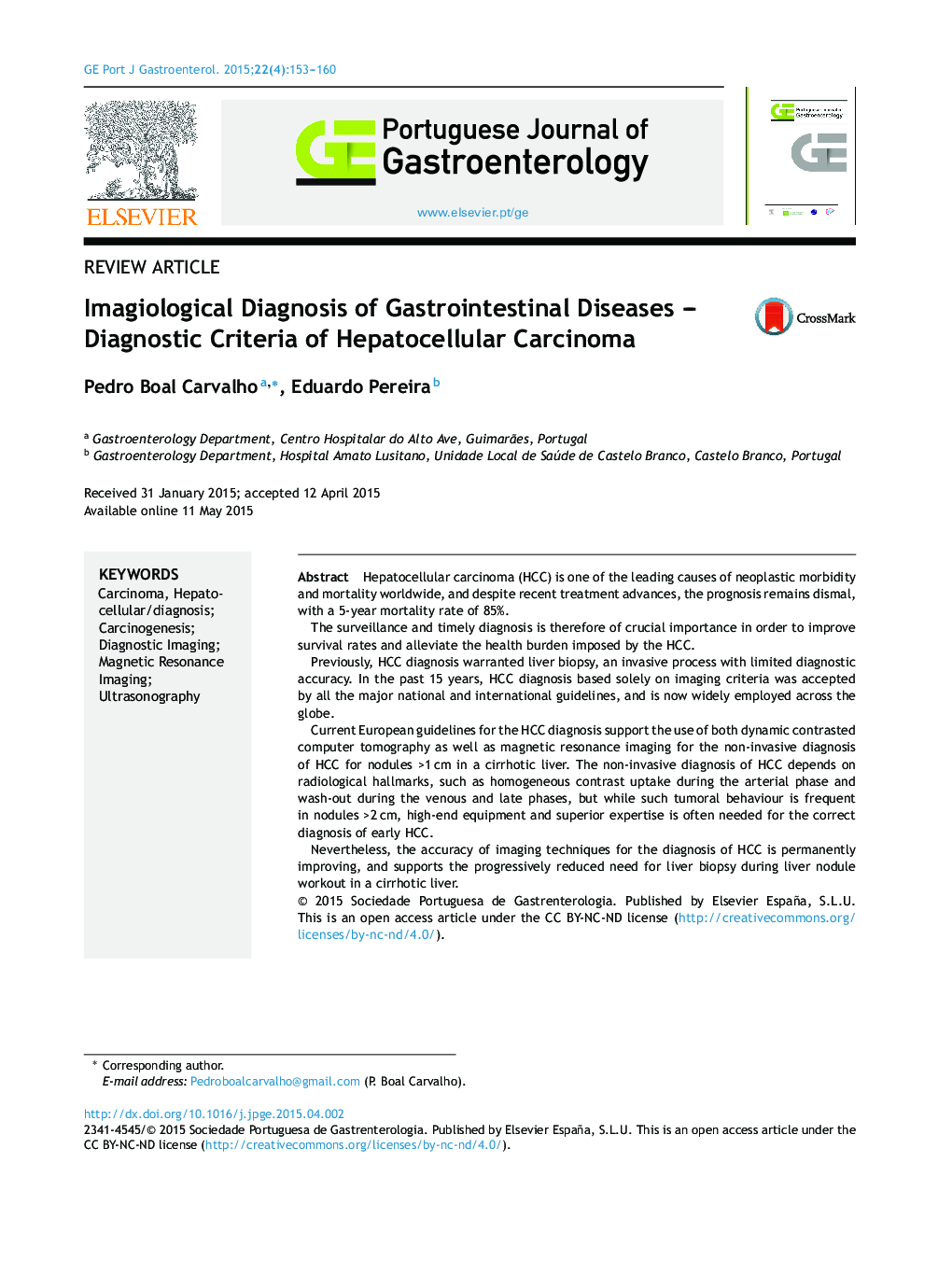| کد مقاله | کد نشریه | سال انتشار | مقاله انگلیسی | نسخه تمام متن |
|---|---|---|---|---|
| 3311309 | 1590274 | 2015 | 8 صفحه PDF | دانلود رایگان |

Hepatocellular carcinoma (HCC) is one of the leading causes of neoplastic morbidity and mortality worldwide, and despite recent treatment advances, the prognosis remains dismal, with a 5-year mortality rate of 85%.The surveillance and timely diagnosis is therefore of crucial importance in order to improve survival rates and alleviate the health burden imposed by the HCC.Previously, HCC diagnosis warranted liver biopsy, an invasive process with limited diagnostic accuracy. In the past 15 years, HCC diagnosis based solely on imaging criteria was accepted by all the major national and international guidelines, and is now widely employed across the globe.Current European guidelines for the HCC diagnosis support the use of both dynamic contrasted computer tomography as well as magnetic resonance imaging for the non-invasive diagnosis of HCC for nodules >1 cm in a cirrhotic liver. The non-invasive diagnosis of HCC depends on radiological hallmarks, such as homogeneous contrast uptake during the arterial phase and wash-out during the venous and late phases, but while such tumoral behaviour is frequent in nodules >2 cm, high-end equipment and superior expertise is often needed for the correct diagnosis of early HCC.Nevertheless, the accuracy of imaging techniques for the diagnosis of HCC is permanently improving, and supports the progressively reduced need for liver biopsy during liver nodule workout in a cirrhotic liver.
ResumoO carcinoma hepatocelular (CHC) é uma das principais causas de morbi-mortalidade a nível mundial, e apesar de avanços no tratamento, o prognóstico é sombrio, com uma mortalidade aos 5 anos de 85%.Assim, reveste-se de particular importância a vigilância e diagnóstico precoce do CHC, de forma a alterar substancialmente as taxas de sobrevida desta neoplasia.Previamente, o diagnóstico do CHC exigia a realização de uma biópsia hepática, uma técnica invasiva com acuidade diagnóstica limitada. Nos últimos 15 anos, o diagnóstico baseado em técnicas de imagem foi sendo progressivamente aceite pelas principais recomendações nacionais e internacionais, e é agora extensamente aplicado em todo o mundo.As recomendações europeias mais recentes para o diagnóstico do CHC aceitam a utilização de tomografia computorizada contrastada e ressonância magnética contrastada para o diagnóstico não invasivo de CHC em nódulos >1 cm no fígado cirrótico. Este diagnóstico depende da presença de alterações imagiológicas típicas, como a hipercaptação homogénea de contraste na fase arterial e o wash-out nas fases portal e tardia, características frequentes em nódulos >2 cm, mas de difícil identificação em CHC de dimensões reduzidas.Em conclusão, as técnicas imagiológicas para o diagnóstico do CHC apresentam uma acuidade diagnóstica progressivamente mais elevada, e permitirão reduzir significativamente a necessidade de biópsia hepática durante a abordagem de nódulos hepáticos num fígado cirrótico.
Journal: GE Portuguese Journal of Gastroenterology - Volume 22, Issue 4, July–August 2015, Pages 153–160